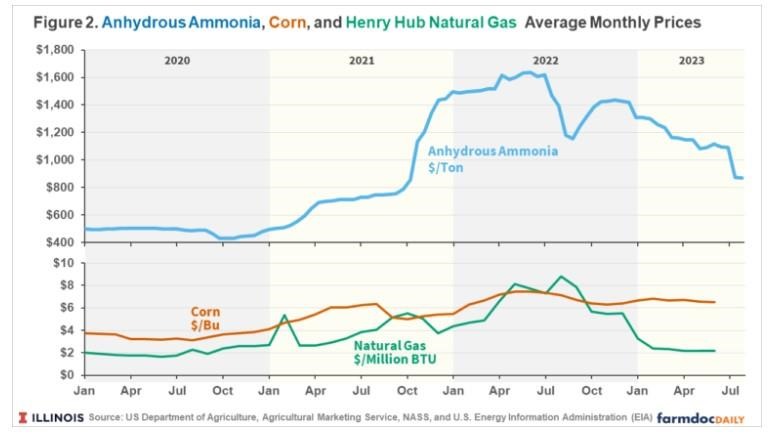By tiffany.dowell
The United States Supreme Court has issued its Opinion in Sackett v. United States, a case looking at the proper test to determine whether a wetland is jurisdictional under the Clean Water Act (CWA). To hear my discussion on this case with our favorite law professors, Jesse Richardson and Anthony Schutz, click here. To read a significantly shorter Q&A interview about the case I did with Progressive Cattle, click here.

For those of you who have no interest in reading such a long description, here is a short summary.
The Court unanimously agreed the “significant nexus” test is not the proper way to determine whether wetlands constitute a WOTUS. The Court also unanimously agreed the Sacketts’ property is not a WOTUS. Thus, the decision from the US Court of Appeals for the Ninth Circuit was reversed.
However, the Justices did not agree on the proper test to determine whether “adjacent” wetlands are jurisdictional. The five-Justice majority held CWA jurisdiction extends only to wetlands that are “as a practical matter indistinguishable from waters of the United States,” which requires the party asserting jurisdiction over adjacent wetlands to show first the adjacent body of water is a relatively permanent body of water connected to a traditional interstate navigable water, and the wetland as a continuous surface connection with that water, making it difficult to determine where the ‘water’ ends and the ‘wetland’ begins. The remaining 4 justices would have applied a slightly broader test that would include the majority’s definition but would also include wetlands separated from a covered water only by a man-made dike or barrier, natural river berm, beach dune, or the like.
A majority of the Court also appears to agree with Justice Scalia’s test in Rapanos plurality Opinion. This test states that there are two categories of jurisdictional waters: (1) relatively permanent bodies of water connected to traditional interstate navigable waters; and (2) wetlands with such a close physical connection to those waters that they were ‘as a practical matter indistinguishable’ from WOTUS. There was no discussion of the application of the “relatively permanent bodies of water connected to traditional interstate navigable waters” standard, or how that might apply to cases involving tributaries, however. Thus, while this Opinion did answer some questions, others remain.
Background
The Sacketts purchased a lot near Priest Lake in Idaho. In preparation to build a home on the lot, they began backfilling the property with dirt and rock. The EPA claimed the wetlands on the Sacketts’ lot were “adjacent to” an “unnamed tributary” on the other side of a 30-foot road. That tributary fed into a non-navigable creek, which fed into Priest Lake, which the EPA designated as traditionally navigable.
A few months later, the EPA sent them a compliance order that the wetlands on their property were a “Water of the United States” and backfilling violated the Clean Water Act. In particular, the EPA claimed the lot, when considered with all other “similarly situated” properties in the area, had a “significant nexus” to the jurisdictional lake, making the Sacketts’ lot a WOTUS. The EPA demanded the Sacketts restore the property and threatened them with civil penalties of $40,000/day if they did not comply.
Litigation
The Sacketts filed suit under the Administrative Procedure Act alleging the EPA lacked jurisdiction because their property was not a WOTUS. Initially, the trial court dismissed their suit finding the compliance order was not a final agency action–an issue that found its way to the US Supreme Court in 2012, when the Court held the Sacketts could bring their suit.
The trial court granted summary judgment to the EPA, finding the Sacketts’ lot was a WOTUS. The United States Court of Appeals for the Ninth Circuit affirmed, holding because the Sacketts’ lot was an adjacent wetland with a significant nexus to a traditionally navigable water, the Clean Water Act applied.
The Sacketts sought review from the United States Supreme Court.
Applicable Law
The federal Clean Water Act, passed in 1972, prohibits the point source discharge of any pollutant into “navigable waters.” The CWA requires anyone seeking to make a covered discharge to obtain a federal permit from the EPA or US Army Corps of Engineers. A pollutant includes contaminates like chemicals, but also includes rock, sand, and dirt. “Navigable waters” are defined as “waters of the United States, including the territorial seas.” [For more info on the Clean Water Act and agriculture, read a blog post here and listen to a podcast episode here.]
In 1977, Congress amended the CWA’s permitting section to include “wetlands adjacent thereto.”
In 2006, the US Supreme Court issued a fractured decision in Rapanos v. United States. The 4-Justice plurality held that in order to be considered a WOTUS, a water must be a “relatively permanent” body of water and wetlands must “abut” a jurisdictional water. In a concurring opinion, Justice Kennedy put forth a “significant nexus” test, finding waters were jurisdictional if they, in combination with similarly situated waters in the region, significantly affect the chemical, physical, and biological integrity of jurisdictional waters.
Supreme Court Opinion
Justice Alito authored the Opinion of the Court. As noted below, the outcome was unanimous with all 9 Justices agreeing the Sacketts’ property is not a WOTUS, but the Justices differed on the proper test to apply to reach this conclusion.
History of CWA
Justice Alito began the Opinion of the Court with a look at this history of the CWA, which he wrote has been a “great success” at protecting the nation’s rivers, lakes, and streams from pollution. He described the CWA as a “potent weapon” with “crushing consequences even for inadvertent violations,” noting the potential for both civil and criminal penalties, including imprisonment and fines of up to $60,000/day. He also said the permitting process involves significant costs and a process that can be “arduous, expensive, and long.”
Click here to see more...